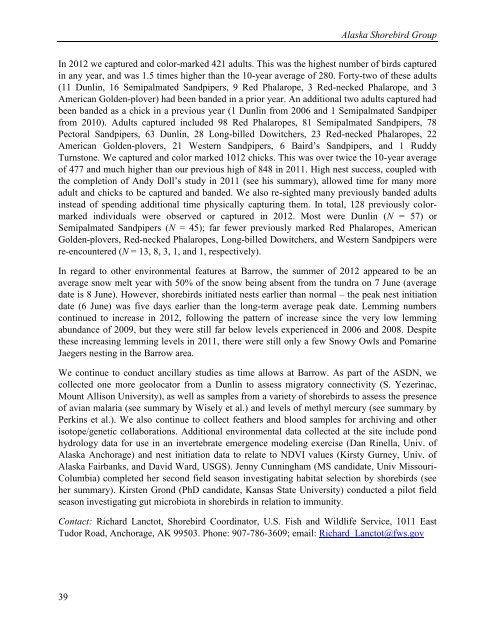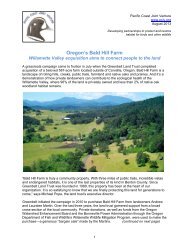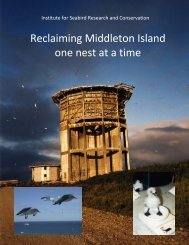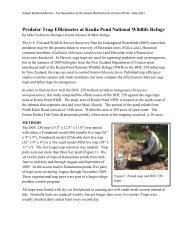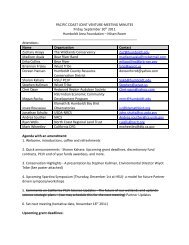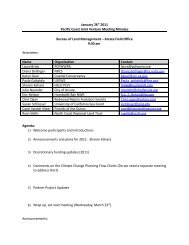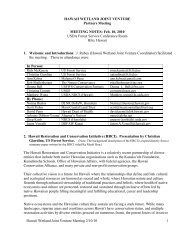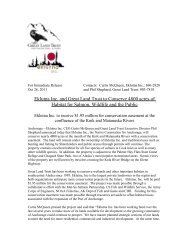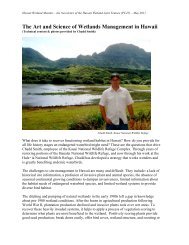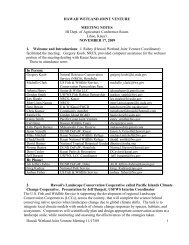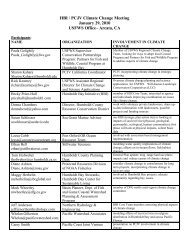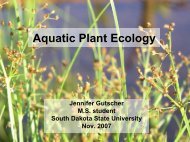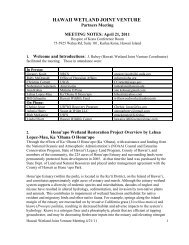Alaska Shorebird Group Annual Summary Compilation
Alaska Shorebird Group Annual Summary Compilation
Alaska Shorebird Group Annual Summary Compilation
Create successful ePaper yourself
Turn your PDF publications into a flip-book with our unique Google optimized e-Paper software.
<strong>Alaska</strong> <strong>Shorebird</strong> <strong>Group</strong>In 2012 we captured and color-marked 421 adults. This was the highest number of birds capturedin any year, and was 1.5 times higher than the 10-year average of 280. Forty-two of these adults(11 Dunlin, 16 Semipalmated Sandpipers, 9 Red Phalarope, 3 Red-necked Phalarope, and 3American Golden-plover) had been banded in a prior year. An additional two adults captured hadbeen banded as a chick in a previous year (1 Dunlin from 2006 and 1 Semipalmated Sandpiperfrom 2010). Adults captured included 98 Red Phalaropes, 81 Semipalmated Sandpipers, 78Pectoral Sandpipers, 63 Dunlin, 28 Long-billed Dowitchers, 23 Red-necked Phalaropes, 22American Golden-plovers, 21 Western Sandpipers, 6 Baird’s Sandpipers, and 1 RuddyTurnstone. We captured and color marked 1012 chicks. This was over twice the 10-year averageof 477 and much higher than our previous high of 848 in 2011. High nest success, coupled withthe completion of Andy Doll’s study in 2011 (see his summary), allowed time for many moreadult and chicks to be captured and banded. We also re-sighted many previously banded adultsinstead of spending additional time physically capturing them. In total, 128 previously colormarkedindividuals were observed or captured in 2012. Most were Dunlin (N = 57) orSemipalmated Sandpipers (N = 45); far fewer previously marked Red Phalaropes, AmericanGolden-plovers, Red-necked Phalaropes, Long-billed Dowitchers, and Western Sandpipers werere-encountered (N = 13, 8, 3, 1, and 1, respectively).In regard to other environmental features at Barrow, the summer of 2012 appeared to be anaverage snow melt year with 50% of the snow being absent from the tundra on 7 June (averagedate is 8 June). However, shorebirds initiated nests earlier than normal – the peak nest initiationdate (6 June) was five days earlier than the long-term average peak date. Lemming numberscontinued to increase in 2012, following the pattern of increase since the very low lemmingabundance of 2009, but they were still far below levels experienced in 2006 and 2008. Despitethese increasing lemming levels in 2011, there were still only a few Snowy Owls and PomarineJaegers nesting in the Barrow area.We continue to conduct ancillary studies as time allows at Barrow. As part of the ASDN, wecollected one more geolocator from a Dunlin to assess migratory connectivity (S. Yezerinac,Mount Allison University), as well as samples from a variety of shorebirds to assess the presenceof avian malaria (see summary by Wisely et al.) and levels of methyl mercury (see summary byPerkins et al.). We also continue to collect feathers and blood samples for archiving and otherisotope/genetic collaborations. Additional environmental data collected at the site include pondhydrology data for use in an invertebrate emergence modeling exercise (Dan Rinella, Univ. of<strong>Alaska</strong> Anchorage) and nest initiation data to relate to NDVI values (Kirsty Gurney, Univ. of<strong>Alaska</strong> Fairbanks, and David Ward, USGS). Jenny Cunningham (MS candidate, Univ Missouri-Columbia) completed her second field season investigating habitat selection by shorebirds (seeher summary). Kirsten Grond (PhD candidate, Kansas State University) conducted a pilot fieldseason investigating gut microbiota in shorebirds in relation to immunity.Contact: Richard Lanctot, <strong>Shorebird</strong> Coordinator, U.S. Fish and Wildlife Service, 1011 EastTudor Road, Anchorage, AK 99503. Phone: 907-786-3609; email: Richard_Lanctot@fws.gov39


